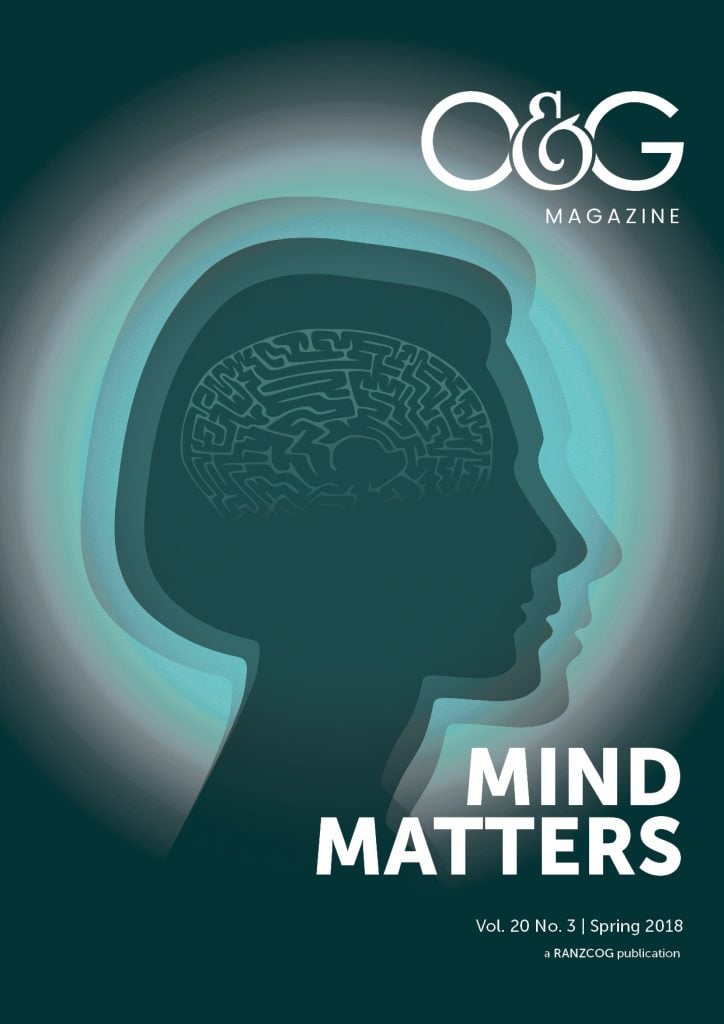Medicine has historically separated disease into either the mind (psyche) or the body (soma). This dualism is evident in how diseases are separated among specialties and how hospitals are structured. Psychosomatic illnesses challenge this paradigm because they present physically, but are thought to have, at least in part, a psychological origin. This is not a new concept and has had a number of iterations over time, such as ‘somatisation’, ‘medically unexplained symptoms’ and earlier clinicians, such as Freud, describing the phenomena as ‘conversion hysteria’.1 However, in more recent times, there has been a shift away from symptoms being psychological in origin and medically unexplained, with greater emphasis placed on the distress and disruption to life created by the condition. In the fifth and current version of the Diagnostic and Statistical Manual of Mental Disorders (DSM-5), such disorders are captured under the diagnostic umbrella of ‘somatic symptom and other related disorders’ and include ‘somatic symptom disorder’, ‘illness anxiety disorder’, ‘conversion disorder’ and ‘factitious disorder’.
Psychosomatic disorder is characterised by somatic symptoms (such as pain, fatigue and gastrointestinal problems) that are distressing or result in significant disruption to daily functioning, and are persistent (greater than six months duration), although the actual nature of the symptom may vary over time. Associated with this are excessive thoughts, feelings or behaviours related to the symptoms or health concerns, such as disproportionate and persistent thoughts about the seriousness of symptoms, high levels of anxiety related to symptoms, and/or excessive time and energy devoted to these symptoms. If the predominant somatic symptom is pain, this can also be specified. Individuals typically present in medical (as opposed to psychiatric) settings and the disorder is recognised as more prevalent in females.2 Given this, the disorder may be of particular interest to clinicians working in obstetric and/or gynaecological settings.
Epidemiology
Rates of psychosomatic disorder in the United States are estimated to be between four to six per cent,3 and it affects many more women than men (approximate female-to-male ratio of 10:1).4 An estimated 20–25 per cent of patients who present with acute somatic symptoms will develop a chronic somatic illness.5 Patients with psychosomatic disorders have twice the annual medical care expenses and utilise twice as many outpatient and inpatient services as controls.6
Aetiology
Although we have not identified the exact aetiology of psychosomatic disorders, a number of theories have been proposed based on observed and studied patterns. It is likely that the population with these diagnoses are heterogeneous in both their clinical presentation and aetiology. Nevertheless, certain risk factors have been identified, including: childhood neglect, sexual abuse, chaotic lifestyle, and a history of alcohol and substance abuse.7
There are a number of proposed models that provide explanations for why and how certain individuals develop a psychosomatic disorder:
- Neurobiological theory: In chronic pain conditions, the central sensitisation hypothesis describes an up-regulation of central nervous system pain pathways over time, and an eventual increased sensitivity to minimal stimulation.8
- Cognitive theory: People with these disorders often have an increased awareness of their own bodily functions and are likely to misattribute symptoms as the presence of a medical illness. Cognitive theory would describe this as a faulty cognitive scheme.9
- Sick role: An unconscious (without awareness) means of avoiding noxious obligations and postpone unwelcome challenges.10
- Psychodynamic theory: ‘Somatisation’ is seen as a lesser-developed psychological defence (coping mechanism) to distress. Thoughts or emotions are repressed and transferred inwards, and expressed in physical symptoms.11
Gynaecological context
There are a number of established clinical syndromes that commonly present in gynaecological settings, with both physical and psychological features. Some examples include: premenstrual dysphoric disorder, mood disorders in the perimenopausal period and chronic pelvic pain. In particular, chronic pelvic pain provides a good example of how both psychological and physical pathology can present in a complex way.
Chronic pelvic pain is a common disorder that is often difficult to manage. It has an estimated prevalence of 38 per 1000 women aged 15–73.6 An estimated £158 million is spent annually on the management of this condition in the National Health Service (NHS) in the UK, and $881.5 million a year on its outpatient management in the United States.12
Chronic pelvic pain is often thought to have a psychosomatic component because organic pathology is not established in many cases, or the pain persists despite the treatment of the organic pathology. This is exemplified by a study that found that organic pathology, such as endometriosis or adhesions, were reported in only half of the cases where diagnostic laparoscopy was performed.13 Psychosocial factors recognised in patients with chronic pelvic pain are similar to psychosomatic disorders, and include sexual abuse, physical abuse and co-morbid mental illness.14 Furthermore, the persisting pain in the context of treatment options being exhausted can lead to frustration, hopelessness, and possible development or worsening of depression. In cases where the thoughts, feelings or behaviour related to the pain appear excessive and disabling, psychosomatic disorder may be diagnosed.
General principles of management
Collaboration is the cornerstone of management of psychosomatic disorders. It is ideal to have a multidisciplinary approach that targets the biological, psychological and social factors contributing to the development and perpetuation of the illness.15 A multidisciplinary approach is also suggested with chronic pelvic pain management.16
The CARE MD model provides an effective framework for the management of patients presenting with psychosomatic disorders (Table 1).9 It was developed for people working in primary care settings, however, the principles remain relevant in other settings. The framework suggests collaboration with mental health practitioners, having an empathic approach, treating co-morbid illness, and encouraging an understanding of the mind-body connection.17
Specific psychological methods that are evidence-based include cognitive behavioural therapy and mindfulness-based therapies.18 Psychological therapies should be tailored to the patient’s presentation. Pharmacological treatments with the greatest evidence include selective serotonin reuptake inhibitors (SSRIs) and tricyclic antidepressants (TCAs).19 Of course, treating co-morbid mental illness is important.
Table 1. CARE MD framework.20
C |
Consultation with psychiatry/cognitive behavioural therapy (CBT) | Follow the CBT treatment plan developed between the patient and therapist. |
A |
Assess | Rule out medical illness, treat co-morbid depression/anxiety. |
R |
Regular visits | Short regular consults, agreement to stop overuse of medical care. |
E |
Empathy | Form a trusting therapeutic alliance, listen to the patient’s distress and symptoms during ‘counselling’ sessions, acknowledge the distress and discomfort. |
M |
Medical-psychiatric interface | Help the patient self-discover the connection between physical complaints and emotional stressors. Avoid comments such as, ‘Your symptoms are all psychological’. |
D |
Do no harm | No unnecessary diagnostic procedures or referrals to other specialists (when not indicated). |
Conclusion
Patients presenting with medically unexplained physical symptoms should be assessed and treated with a multidisciplinary approach that manages the biological, psychological and social aspects of the disorder. Doctors often find treating patients with these diseases challenging because the presentations do not neatly fit into our paradigms of illness and treatment. Psychosomatic disorders are often chronically disabling and require rehabilitation aiming at improvement of quality of life and social participation. It is important to try and shift our thinking, work together and help manage what is a significant disease affecting many people (especially women) in our community.
References
- Sadock B, Sadock V, Ruiz P. Kaplan and Sadock’s synopsis of psychiatry behavioural sciences/clinical psychiatry. 11th ed. Philadelphia (PA): Wolters Kluwer; 2015.
- Kurlansik S, Maffei M. Somatic symptom disorder. Am Fam Physician 2016;93(1):49-54.
- American Psychiatric Association. Diagnostic and statistical manual of mental disorders (DSM-5®). American Psychiatric Pub; 2013.
- Kurlansik S, Maffei M. Somatic symptom disorder. Am Fam Physician 2016;93(1):49-54.
- Kurlansik S, Maffei M. Somatic symptom disorder. Am Fam Physician 2016;93(1):49-54.
- Barsky A, Orav E, Bates D. Somatization increases medical utilization and costs independent of medical and psychiatric comorbidity. Arch Gen Psychiatry 2005;62(8):903-10.
- Kurlansik S, Maffei M. Somatic symptom disorder. Am Fam Physician 2016;93(1):49-54.
- Basbaum A, Bautista D, Scherrer G, et al. Cellular and molecular mechanisms of pain. Cell 2009;139(2):267-84.
- Sadock B, Sadock V, Ruiz P. Kaplan and Sadock’s synopsis of psychiatry behavioural sciences/clinical psychiatry. 11th ed. Philadelphia (PA): Wolters Kluwer; 2015.
- Sadock B, Sadock V, Ruiz P. Kaplan and Sadock’s synopsis of psychiatry behavioural sciences/clinical psychiatry. 11th ed. Philadelphia (PA): Wolters Kluwer; 2015.
- Sadock B, Sadock V, Ruiz P. Kaplan and Sadock’s synopsis of psychiatry behavioural sciences/clinical psychiatry. 11th ed. Philadelphia (PA): Wolters Kluwer; 2015.
- Latthe P, Mignin L, Gray R, et al. Factors predisposing women to chronic pelvic pain: systematic review. BMJ 2006;
332(7544):749-55. - Latthe P, Mignin L, Gray R, et al. Factors predisposing women to chronic pelvic pain: systematic review. BMJ 2006;
332(7544):749-55. - Lal M. Psychosomatic approaches to obstetrics, gynaecology and andrology. J Obstet Gynaecol. 2009;29(1):1-12.
- Kurlansik S, Maffei M. Somatic symptom disorder. Am Fam Physician 2016;93(1):49-54.
- Fall M, Baranowski A, Elneil S, et al. EAU guidelines on chronic pelvic pain. European Urology 2010;57(1):35-48.
- McCarron R. Somatization in the primary care setting. Psychiatr Times 2006;23(6):32-34.
- Kurlansik S, Maffei M. Somatic symptom disorder. Am Fam Physician 2016;93(1):49-54.
- Kurlansik S, Maffei M. Somatic symptom disorder. Am Fam Physician 2016;93(1):49-54.
- McCarron R. Somatization in the primary care setting. Psychiatr Times 2006;23(6):32-34.







Leave a Reply